
Sundry Sunday is our weekly feature of fun gaming culture finds and videos, from across the years and even decades.
It’s pretty short, at a minute and a half, but here is a brief and silly explanation of the classic arcade game Dig Dug. That’s all!
The Flipside of Gaming

Sundry Sunday is our weekly feature of fun gaming culture finds and videos, from across the years and even decades.
It’s pretty short, at a minute and a half, but here is a brief and silly explanation of the classic arcade game Dig Dug. That’s all!
Dr. Sparkle is back with the 64th installment (Youtube, 55 minutes) of his quest to review every NES and Famicom game. He’s pretty far in! In about ten episodes, he figures he’ll reach the launch of the Super Famicom, which won’t be the end of his journey but will probably mean he’s in the home stretch.
In the meantime, ten games from 1990 are in this episode. They are:
Puss ‘n’ Boots: Pero’s Great Adventure – Technically a retread of a previously-covered Japanese game, this version has substantial differences so Dr. Sparkle decided to cover its U.S. version separately. A very easy game until the last stage where it jumps in difficulty, and then the final boss is absurdly hard. Dr. S expresses confusion why a game made to be so easy that it’s obviously intended for young children would become nearly impossible right at the last second. Personally, I suspect it was done because NES game publishers were terrified of the game rental market.
Wit’s: A Japan-only release, this is basically a de-luxe version of Snake, where your enemies have special abilities that you have to account for. Suprisingly, it’s an arcade port!
Captain Tsubasa Vol. II: Super Striker: A weird RPG take on Soccer, published by Tecmo and based on a manga and anime series. Instead of controlling a player or players completely in real time, the action pauses frequently and asks you what to do. The main screen is mostly animations down on the soccer field. It’s a unique take on soccer, but it’s not the only one: this is the second game to play like this on the Famicom. The Captain Tsubasa game series continues even today: the most recent releases, Dr. Sparkle tells us, are on PS4 and Nintendo Switch, although I don’t know if they take the menu-based RPG approach.
Jyuouki: This is simply a licensed Famicom port of Sega’s Altered Beast, and a pretty bad one at that.
Mahjong G-Men: Nichibutsu Mahjong III: Yet another Mahjong game, although with some interesting features, if you’re into Mahjong. That’s not Mahjong Solitaire, a.k.a. Shanghai, the Activision (and formerly PLATO) computer game where you remove tiles in matching pairs from a tableaux, but the Chinese Rummy-like game using tiles instead of cards. It also has a weird Tetris-like subgame involving Mahjong tiles.
The Pennant League: Home Run Nighter ’90: Yet another Famicom baseball game.
Dr. Mario: The classic Nintendo puzzle game! I always thought it was a bit inferior to Tetris, but then most games are, and that didn’t stop me from playing a ton of it long ago.
Pictionary: Based on the board game, and coming from infamous American NES publisher LJN. Dr. Sparkle is a bit harsh on developer Software Creations, but I think this effort looks pretty well-made to me. It’s not a classic, and it’s actually not really so much Pictionary as a kind of variation on the theme, where players play mini-games to reveal parts of a drawing and then try to guess what the drawing is of. It looks much like one of Rare’s many game show and board game adaptations and creations, and in fact if it weren’t for the Software Creations credit I’d have assumed that Rare made it.
Bigfoot: From Acclaim and developed by Beam Software. It’s fairly well polished for a Beam Software title, but has some weird ideas to it, including a weird control scheme for the events that involves tapping left and right on the control pad. I think the idea has a bit of merit, but that it was probably the wrong place to use it. A Bigfoot game would mostly be bought or given to kids, who would be the absolute last demographic you should expect to master a non-standard control scheme. I’m not one of those people who thinks making a game that goes about its play differently than most other games is always a terrible idea (see: most of what I’ve ever written about roguelikes), and I can kind of see why they did it, trying to make a race game that’s more than just holding to the right. It probably could have used a bit more iteration though.
Snake Rattle ‘n’ Roll: A game from Rare that they actually put a lot of effort into, and it shows. And some people really like it, it’s definitely got a cult following. Dr. S isn’t part of it, due to the difficulty of getting used to SRnR’s isometric style. I think what happened was, they had these routines laying around that they used in implementing NES Marble Madness, and decided to do another game that controlled in that kind of way. I think the game was poorly suited to a digital control pad; if it were controlled with an analog stick, or at least a digital control where diagonal movement is easier, I think it’s possible that some people who hate Snake Rattle ‘n’ Roll might be able to enjoy it better.
Anyway, here is the whole episode, start to finish:
This is a double review of the Creepy Syndrome and Harmony: The Fall of Reverie, played with a retail key and press key respectively.
0:00: Intro
00:13: The Creepy Syndrome
2:39: Harmony the Fall of Reverie

Owner of Game Wisdom with more than a decade of experience writing and talking about game design and the industry. I’m also the author of the “Game Design Deep Dive” series and “20 Essential Games to Study”

On Romhack Thursdays, we bring you interesting finds from the world of game modifications.
The site of friend-of-the-blog Matthew Green has a wonderful post that describes a new hack that puts the long-lost tracks from two Satellaview versions of F-Zero into the main game, making them playable in a romhack. The creators of the hack, called BS F-Zero Deluxe, went to great lengths to recover them, partly by using tracks recovered from old Satellaview Flash carts, and some by actually recreating them painstakingly from a VCS recording of the tracks being played.
The post has a long discussion with the hack’s main programmer that goes into great detail concerning the origins of the tracks and how they were recovered, and other context surrounding the broadcast versions of the game. I won’t restate all of that here; it’s well worth reading it over on Press The Buttons.
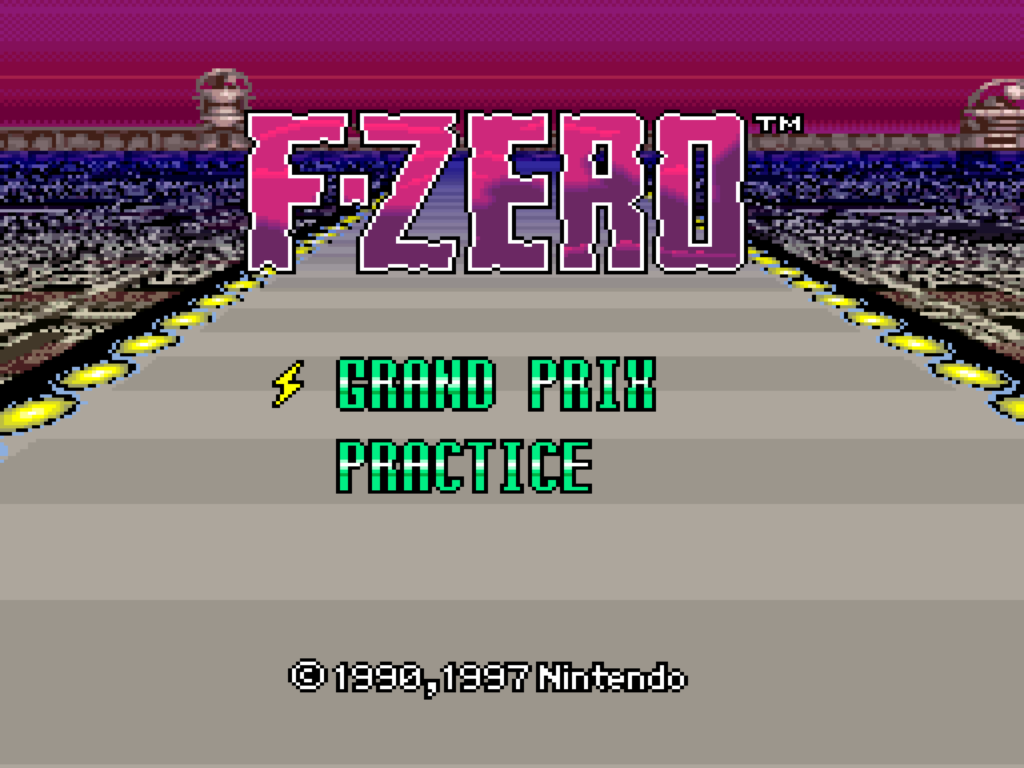
The great thing about the tracks is they follow the progression of the original game. The original had a number of tracks that would be iterated over, with changes, as the player went through the leagues of the game, and the new tracks continue that pattern, with Big Blue II, Silence II, and Mute City IV, as well as new track sequences Forest I, II and III, Sand Storm I and II, and Metal Fort I and II.
The ten added tracks have been collected into two new BS Leagues to test classic F-Zero players:
BS-1 League
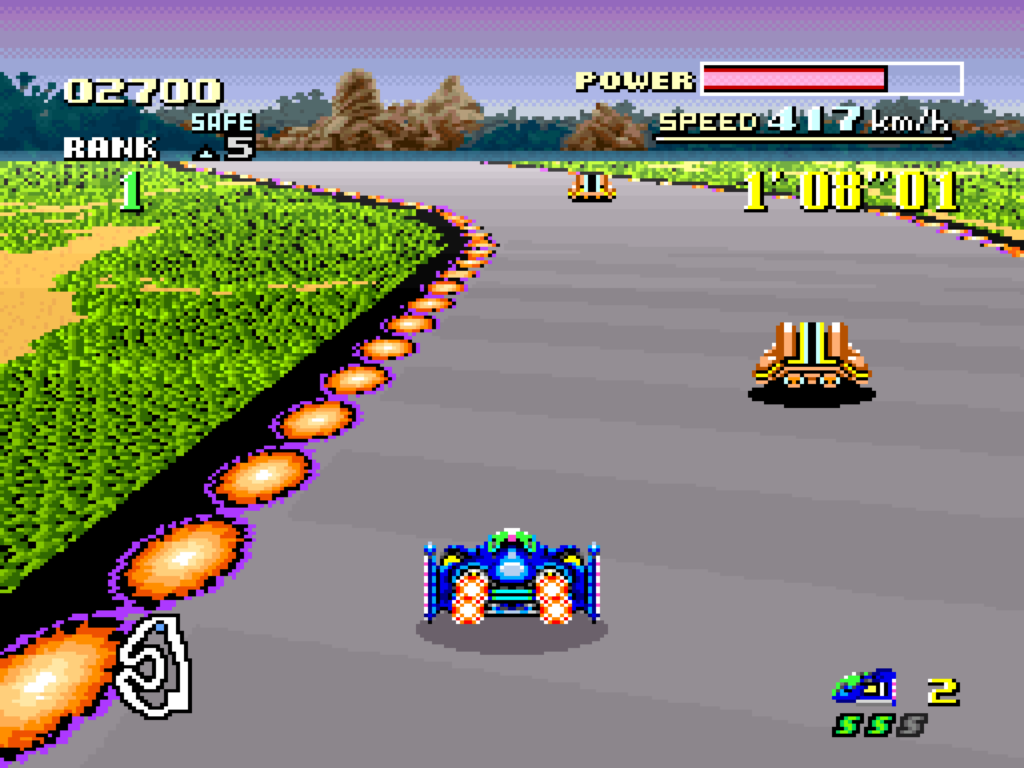
FOREST I: One of only two tracks with no pit area for recovering energy! The Forest tracks are fairly simple tracks, but have large areas with slip zones.
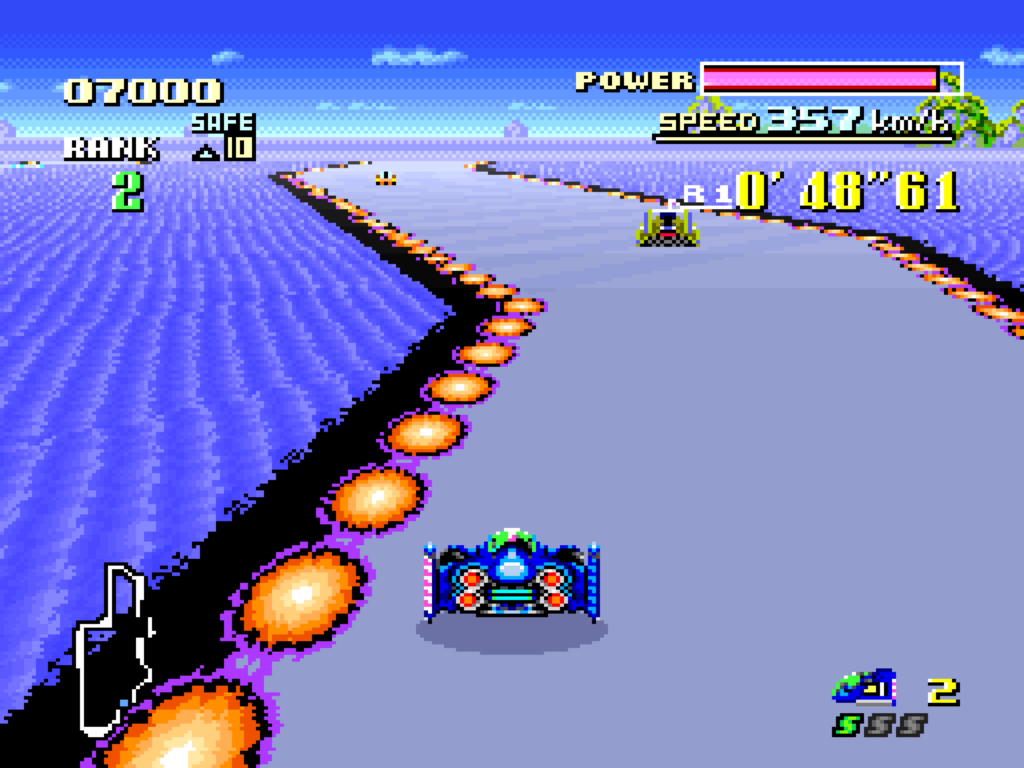
BIG BLUE II: Many changes from Big Blue in F-Zero, including a branch with a hard jump on the left, and an easy jump on the right. If you take the hard jump and it doesn’t look like you’ll make it, you can fairly easily steer in the air back onto the easy jump route.
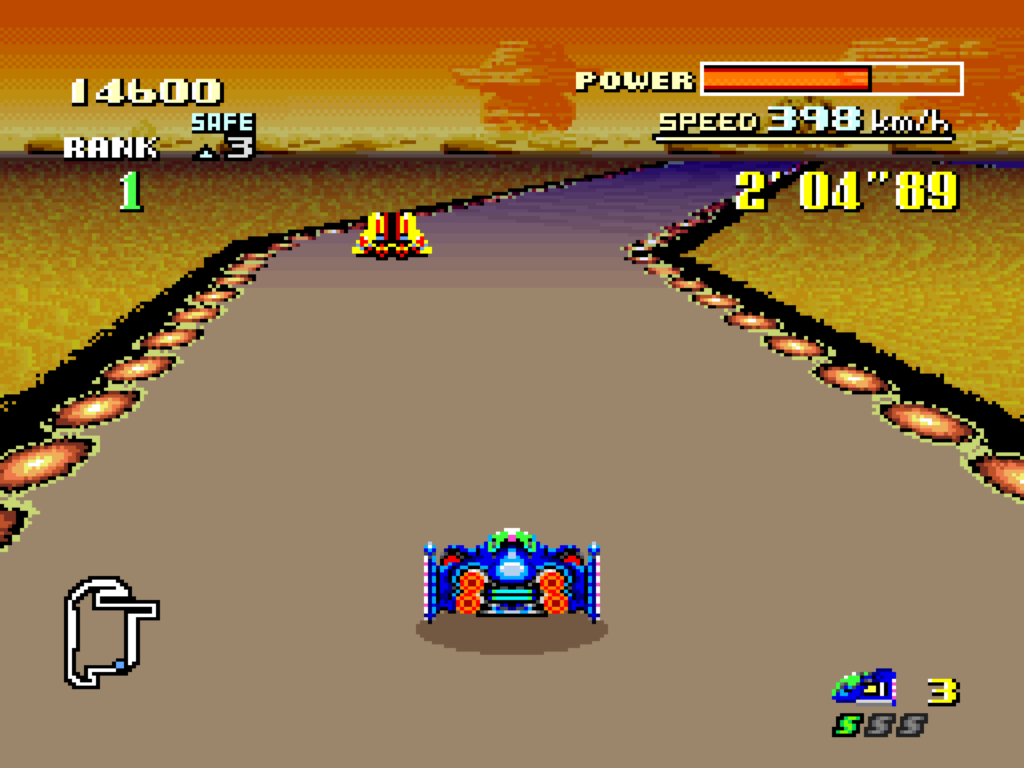
SAND STORM I: Somewhat like an easier version of Fire Field, and with the Fire Field music to boot. Watch out for the narrow hazard zone with land mines down the middle! It’s hard for me to tell exactly, but it seems like this track uses Death Wind’s gimmick, where you’re constantly being pushed around as you drive.
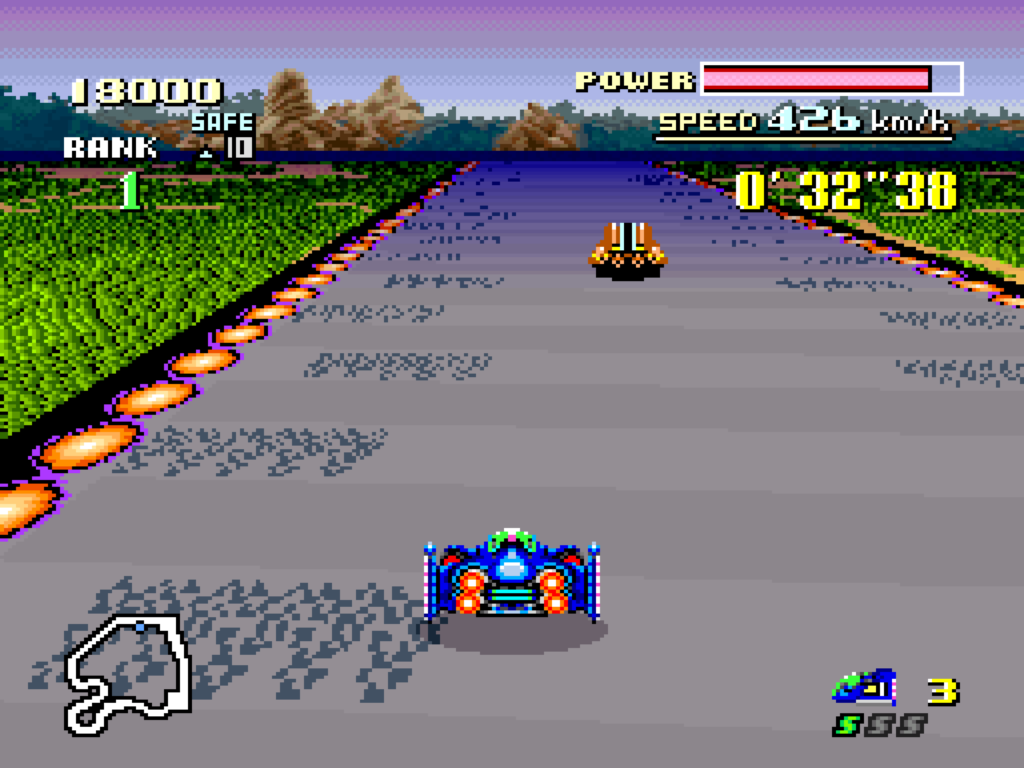
FOREST II: In addition to being the other track with no pit zone, a large part of the track is composed of one long slip zone.

SILENCE II: The many 90-degree turns of the original Silence have been simplified, but in their place are two sections with land mines that are worse than any of their use in the original F-Zero. There’s also a highly dangerous section where all the walls of the track have been replaced with jump pads, giving unskilled drivers ample opportunity to launch themselves into oblivion.
BS-2 League
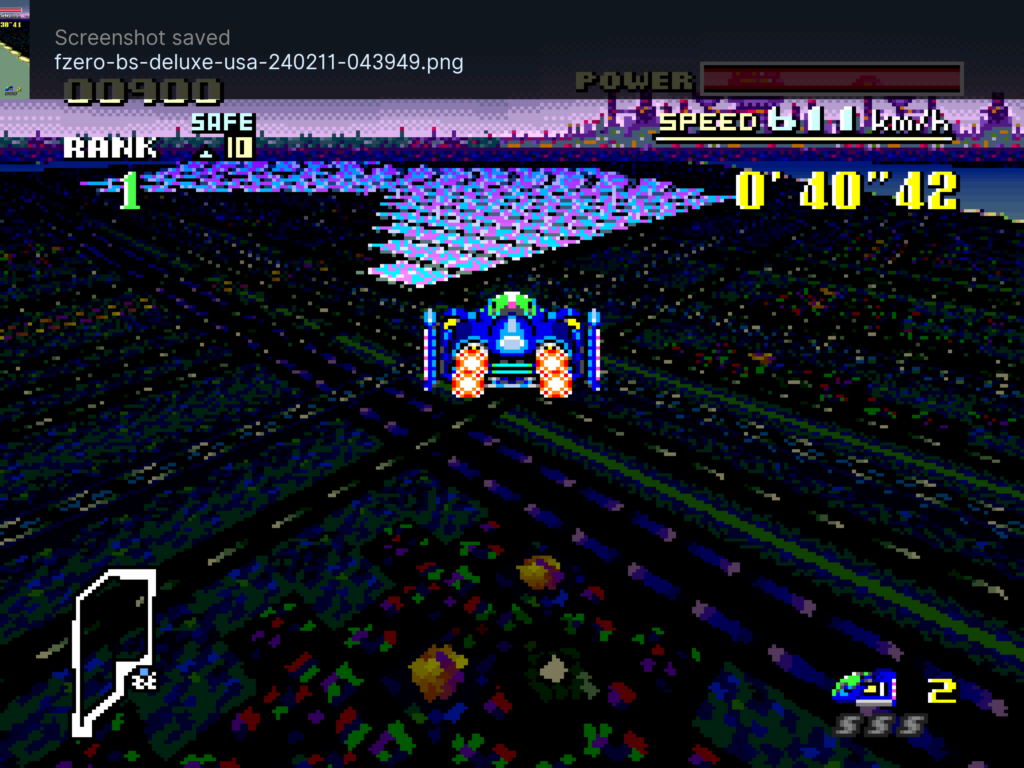
MUTE CITY IV: The original three Mute City tracks began each of the original game’s leagues, and were mostly the same except for a significant changed area in the middle of the track. In Mute City II it was a difficult branch, and Mute City III added a narrow section and some landmines. Mute City IV does the same thing, except its new area is a huge series of jumps over open space! When you see the big arrows made of jump pads pointing the way back on to the track you had better follow them! It’s easy to die here even if you know what you’re doing, since at high speed you’ll probably have to aim for the narrow parts of the arrow.
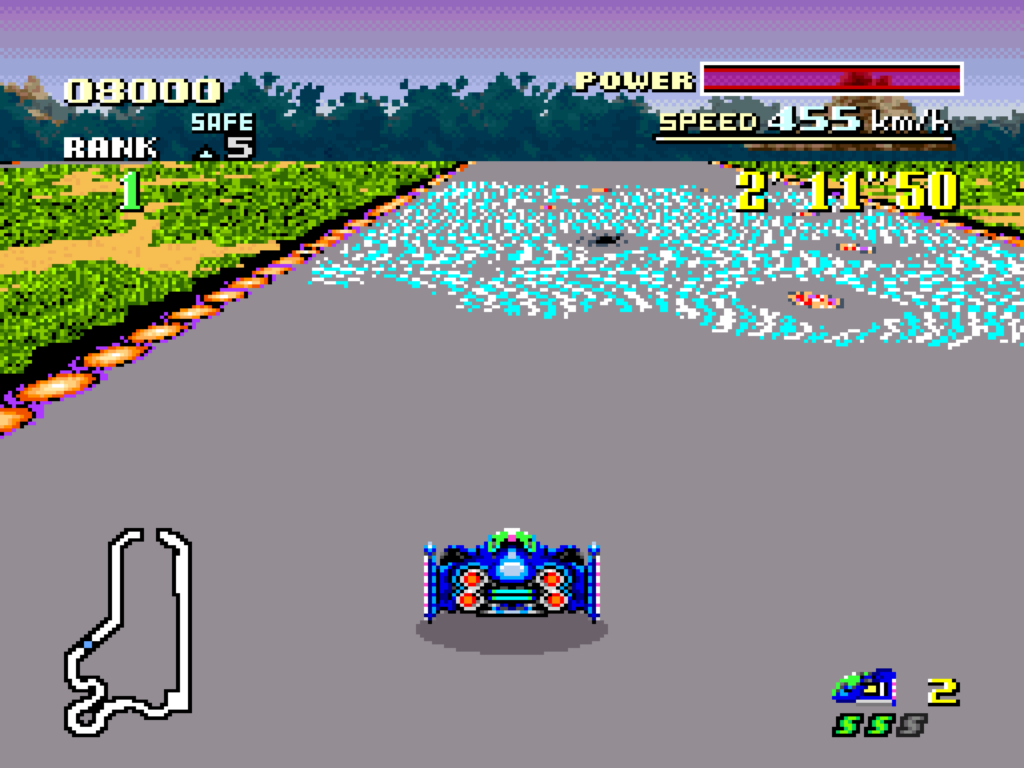
FOREST III: The only Forest track with a recharge area. It’s still not a complex track, but there are a couple of slippery areas with mines to avoid.
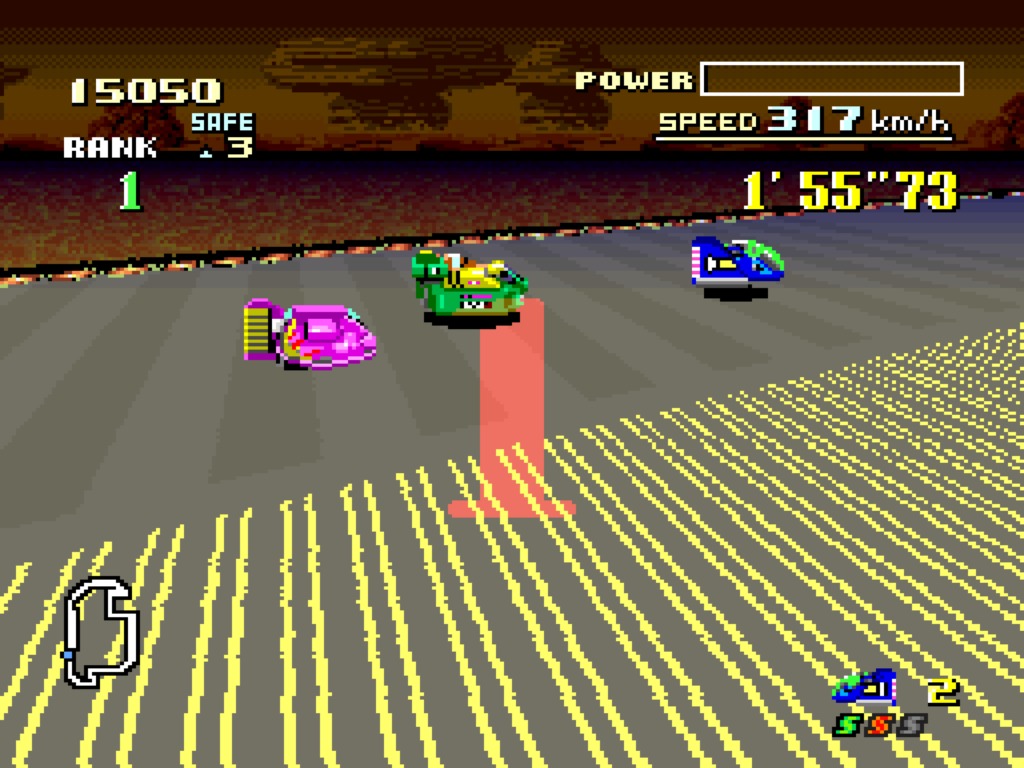
SAND STORM II: The most difficult track of the new set, with lots of tight turns and an area with the magnets that pull you to the side, in addition to the strong winds.

METAL FORT I: Not so hard a track, except for the place where you have a jump onto a narrow section with magnet hazards on the sides. Make sure you’re lined up right, or BOOM.
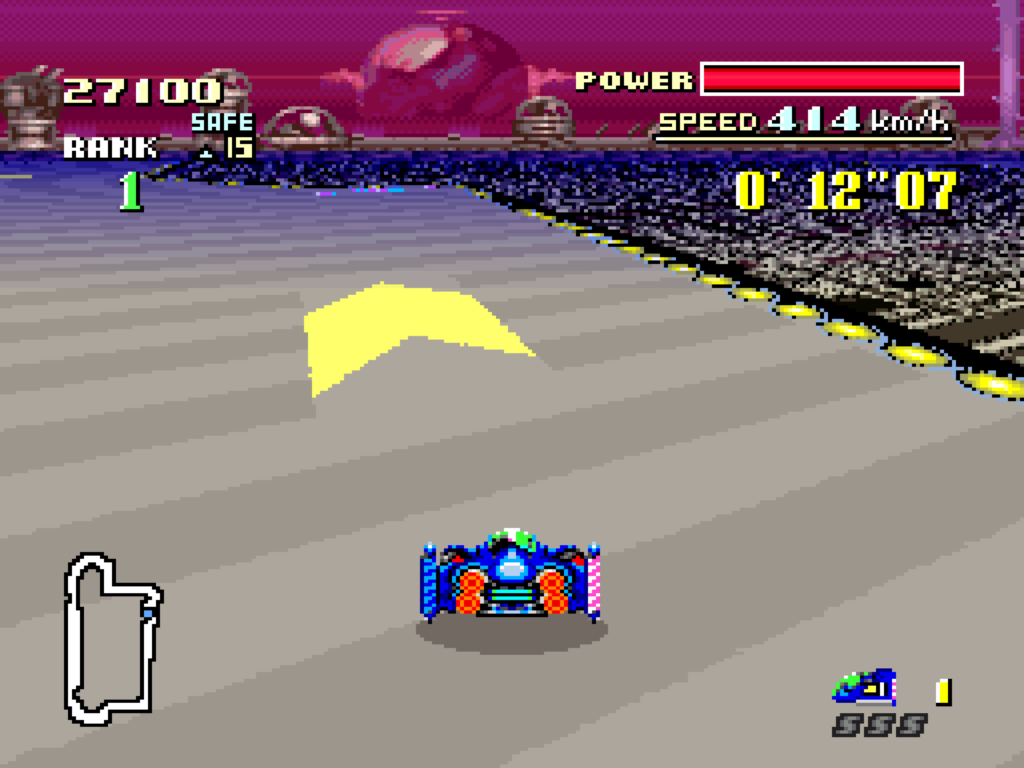
METAL FORT II: For the last of the new tracks, it’s not really that challenging. There are two jumps on the side of the track, with boost pads just before them. For the first jump, if you miss the boost pad you probably won’t have enough speed to make it to the end of the jump unless you steer back onto the track, but if you hit the boost you should be okay. The second pad, you’ll probably have to steer back onto the track regardless, you simply don’t have enough speed to keep going straight even if you hit the boost.
BS F-Zero Deluxe also includes four more vehicles, with notably different properties from the classic four familiar to everyone who played the original (and F-Zero 99 for that matter). They’re presented alongside the first four, and can even be driven on F-Zero’s 15 tracks.
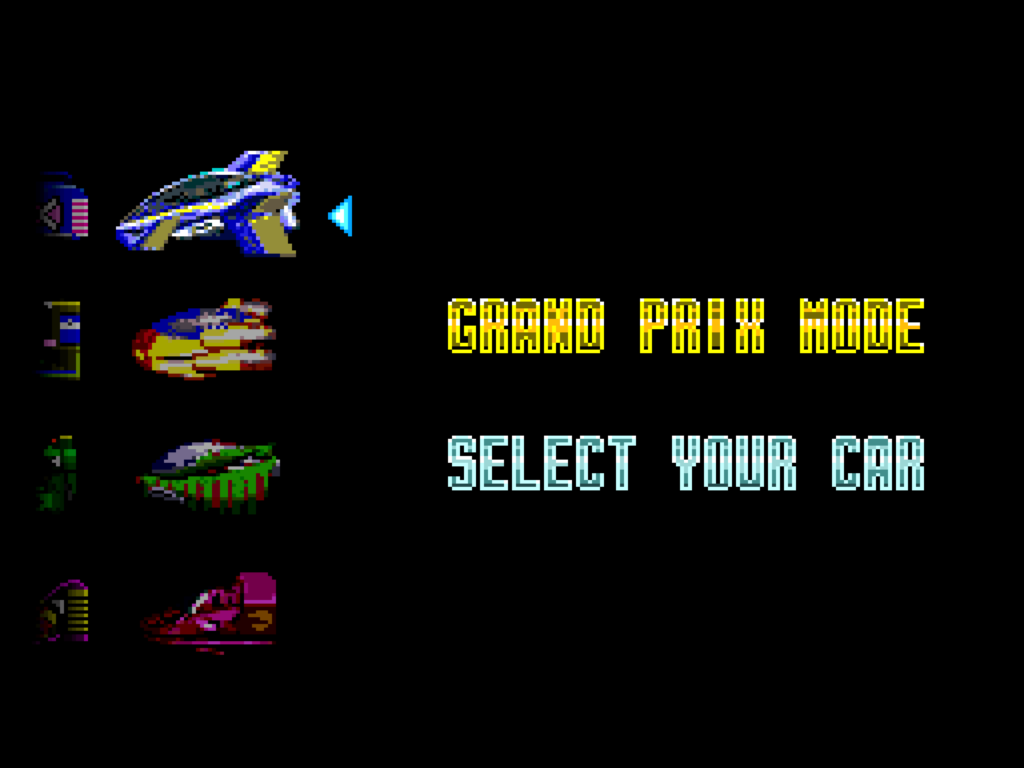
When I start thinking about Nintendo’s Japanese consoles in context with these kinds of events, I start to realize that Nintendo’s long been doing special events to connect with its fans, it wasn’t something that started in the Switch era. On the Famicom they released special Disk System releases in conjunction with contests; on the Super Famicom there was the Satellaview; and on N64 there was the 64DD. I don’t know of something similar they did on the Gamecube, but the Wii and Wii-U were internet capable and had special software like the Everybody Votes channel to try to engage players. On the portable side of their lineup, there was the e-Reader, special Pokemon events, the DS Kiosks and software experiments like Dusty Diamond and the Nintendo Badge Arcade, and the Nintendo Wi-Fi Connection before they shut it down. I’m sure there’s a lot of things I’m forgetting too.
It’s a shame that Nintendo tends to regard all of these things as trash, never to be revisited except maybe in the occasional trophy or sticker in Smash Bros. The people who all of this would matter to aren’t getting younger; it seems like a huge missed opportunity for them.
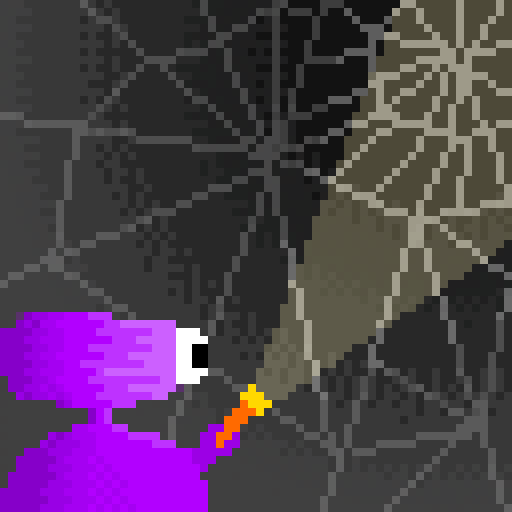
The World Wide Web is now over thirty years old. In that time, more content has vanished from it than remains now, but some of it can still be dredged up from the shadowy archives of the Wayback Machine. This is the latest chapter in our never-ending search to find the cool gaming stuff that time forgot….
It used to be that the internet was full of thousands of tiny sites. Many of them might only have gotten a few visits a year, if that, but they were there, quietly and earnestly providing a resource for people who might be looking for it.
One of these sites was ionpool.net, which used to host a listing of classic gaming information. Here it is from its last archived version on the Wayback Machine from December 29, 2020. There’s a lot of links there, and the nature of the Wayback is, unless I check every one of those links, I can’t be sure if any of them will work. The few I’ve tried do, which is something at least.
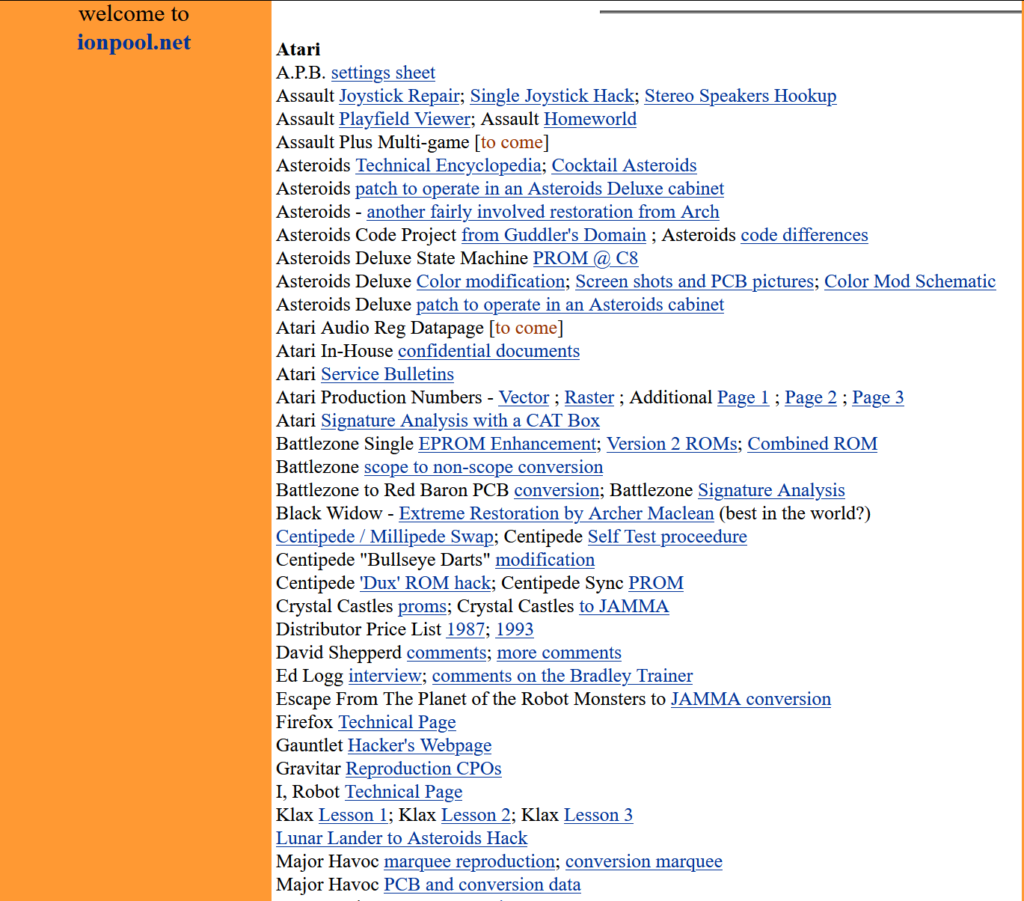
There’s a lot of interesting documents there, presented in the classic List Of Tiny Links format. There’s far more there than I can summarize in a simple throwaway daily blog post like this one, but I particular point out to KLAX In Three Lessons, a series of Usenet posts written by Lyle Rains of Atari Games himself. In fact, those posts are so interesting that I might call them out in a later post….
Back to ionpool.net. The thing that saddens me is that the site still exists, but instead of providing the information that it helpfully offered back in 2013, now it’s just a black page with a graphic reading “END OF LINE.” This:

I can understand that even the slight resources necessary to preserve a website can, over time, become onerous. But I’d think it would be an equivalent cost to host an image like that, instead of leaving the old content up indefinitely. It was largely text files anyway.
Ah well. There is still the Wayback Machine, after all, slow and incomplete as it might be and difficult to sort through like it is. I can’t help but think that we should have more alternatives, though. The Internet Archive is not forever either.

I never finished my recap of 2023’s highest-ranked 7DRL entries, and 2024 is rolling around already, set to begin on March 1st! Here is it’s itch.io page, and Cogmind creator Kyzrati’s Mastodon mention.
7DRL, the 7-Day RogueLike challenge, is one of the oldest still-going gamejams out there, and still among the most interesting. Every year a number of surprisingly interesting games come out of it. One year, back when @Play was on GameSetWatch, I took it upon myself to look at every game that succeeded at the challenge that year. I think it was 2011? Even though it took weeks, enough time that I vowed I’d never review every game again, even some of the lesser ones had some interesting aspect to them.
This year will undoubtedly add yet more game to that backlog, hooray! That was a sarcastic hooray, I won’t deny it. But it was also, in a sense, an honest one too. More interesting and unique games mean more fun for everyone, fun that doesn’t cost $60 + DLC prices. And making them means more experienced gamedevs making things they like, things that don’t rely on multi-hundred dollar triple-A outlays of cash to realize, and that helps us, very slightly yet perceptibly, reclaim gaming culture from the wash of monotonous big-money content with which we’re all inundated.
It all starts March 2nd, so if you’re interested in participating, get ready to make! And it all ends, mostly, on March 11th, so get ready to play! (I say mostly because technically the challenge isn’t absolutely time-locked. But it’s a good period to aim for and build hype around.)
This tab has been open on my browser for literally months, so I’m finally excising it from the bar….
A while back the site HackADay did a teardown of the NES, going through how to take it apart and reassemble it, and going through some of the elements of its assembly. It doesn’t go into a lot of detail, but that lets it be fairly short, at only nine minutes.
NES Hardware Explained (HackADay post, Youtube video)